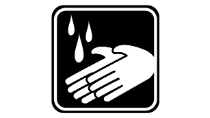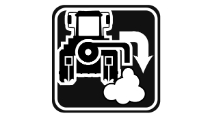Business Statements and Disclaimers
Disclaimer on Product Illustrations
All varieties shown were grown under favourable conditions. Identical results are not guaranteed nor implied for all growing conditions.
The copy rights of all illustrations on this website belong to Nunhems BV (“Nunhems”). All rights are reserved; no part of this publication may be reproduced, stored or transmitted in any form or by any means without the prior written permission of Nunhems.
Disclaimer on Genetically Modified Organisms
The seeds of varieties which are supplied to Buyer are varieties which do not qualify as varieties regulated under GMO-legislation and are not developed by using technologies of recombinant DNA or targeted genome optimization. The methods used in the development and identity preservation of these varieties are aimed at avoiding the presence of off-types, which includes avoiding the presence of material which includes recombinant DNA or material which may have been modified using targeted genome optimization.
Seed production has been carried out in accordance with production rules in the country where production took place, including stipulated isolation distances. Nunhems is committed to the proper stewardship of its products, supports and has affirmed its commitment to the Excellence Through Stewardship™ industry stewardship initiative to be found at the following website: www.excellencethroughstewardship.org. However, due to free circulation of pollen and because it cannot be excluded that material containing recombinant DNA or material which may have been modified using targeted genome optimization are cultivated by others in seed production areas, admixtures with such material cannot totally be prevented. Therefore, no guarantee can be given that the seed lots comprising this delivery are free from any traces of material containing recombinant DNA or material which may have been modified using targeted genome optimization.
Disclaimer on Variety Registrations
The Nunhems varieties listed and published on the website may not (yet) be free for sale in all countries because of local, national and international registration rules. The status of these registrations can vary day by day. Please consult our sales department for the latest updates.
Definition of the terms describing the reaction of plants to pests or pathogens for the vegetable seed industry
(as adopted by the International Seed Federation (June 2012)
- Immunity: Not subject to attack or infection by a specified pathogen or pest.
- Resistance is the ability of a plant variety to restrict the growth and development of a specified pathogen or pest and/ or the damage they cause when compared to susceptible plant varieties under similar environmental conditions and pathogen or pest pressure. Resistant varieties may exhibit some disease symptoms or damage under heavy pathogen or pest pressure.
Two levels of resistance are defined:
- High resistance (HR*): plant varieties that highly restrict the growth and development of the specified pathogen or pest under normal pathogen or pest pressure when compared to susceptible varieties. These plant varieties may, however, exhibit some symptoms or damage under heavy pathogen pressure.
- Intermediate resistance (IR*): plant varieties that restrict the growth and development of the specified pathogen or pest, but may exhibit a greater range of symptoms or damage compared to resistant varieties. Moderately/intermediately resistant plant varieties will still show less severe symptoms or damage than susceptible plant varieties when grown under similar environmental conditions and/or pathogen or pest pressure.
* The standard abbreviations HR (high resistance) and IR (intermediate resistance) are used in all languages. - Susceptibility is the inability of a plant variety to restrict the growth and development of a specified pathogen or pest.
Advice for Safe Use of Treated Seed
The protection of our seeds is carried out according to an agreed industry quality standard. To protect your own safety and the environment, the following precautions should be observed:
General
Do not use treated seed for human or animal consumption or for other processing. Keep out of reach of children and animals. Handle bags with seeds carefully. Avoid contact with skin and respiratory irritation and wear protective clothing during working with the treated seed and cleaning of seed equipment. Wash hands and exposed skin before meals and after work. Cover or remove spilled seed. Keep treated seed away from surface water.
Before sowing
Avoid exposure to dust when the bags are opened, and when filling or emptying the seeder. When filing, do not transfer any optionally present dust from the bags into the seeder. Do not treat the already disinfected seeds with other products.
At sowing
When a pneumatic drill with vacuum is used, the air flow with optionally present dust from treated seed must be aimed towards the ground surface or into the ground through so-called deflectors. Sow the recommended amount of seed. In order to protect birds and mammals the treated seeds have to be worked fully into the soil, also at the beginning and end of the row.
After sowing
Do not leave empty bags of treated seeds uncovered in the environment. Dispose these according to local regulations. Make sure that remains of treated seed are put in the original bags. Do not use empty seed bags for other purposes.
Icons:

Do not use for treated seed human or animal consumption

Keep out of reach of children and animals

Wear suitable protective clothing

Wash hands

Keep away treated seed from surface water

Limit the development of dust to a minimum when sowing
This declaration is prepared by the European Seed Association:
http://www.euroseeds.eu
This version is dated May 2019. All rights are reserved.